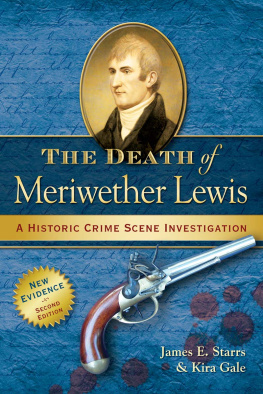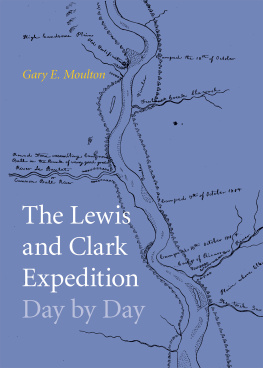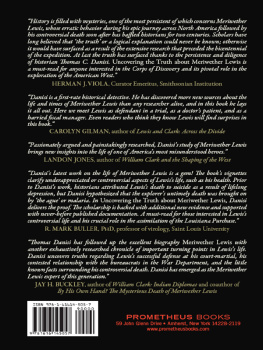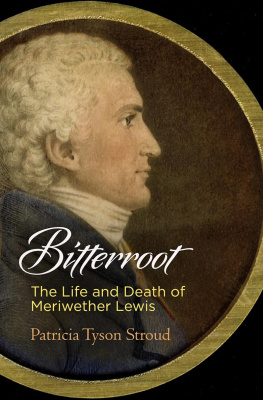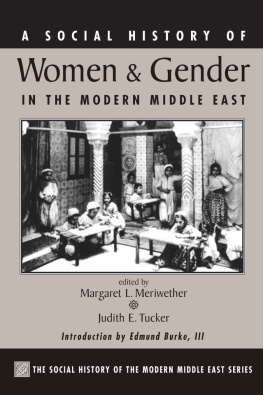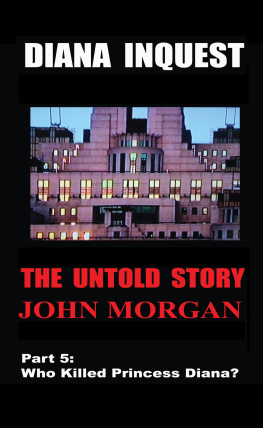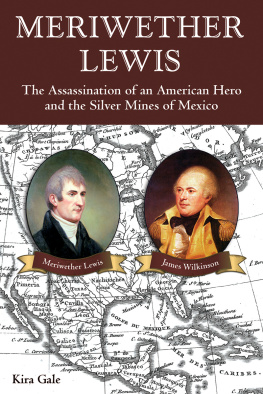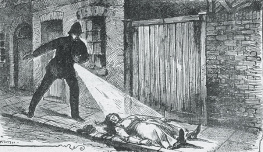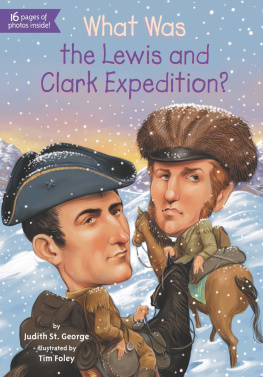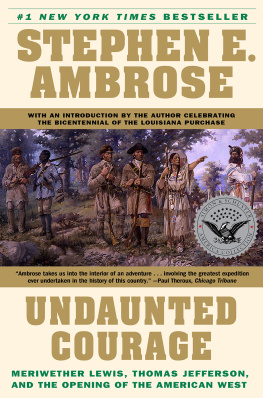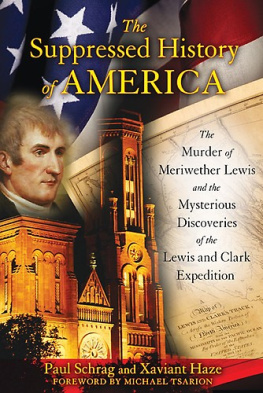

River Junction Press LLC
Omaha, Nebraska 68104
www.deathofmeriwetherlewis.com
James E. Starrs & Kira Gale
All rights reserved. Published 2009
Printed in the United States of America
ISBN: 978-0-9649315-4-1
Second edition, revised, with new evidence, 2012
ISBN: 978-0-9850178-4-2
Library of Congress Cataloging in Publication Data
Starrs, James E.
The death of Meriwether Lewis : a historic crime scene investigation / James E. Starrs & Kira Gale.
p. : ill., maps ; cm.
Includes bibliographical references and index.
ISBN: 978-0-9649315-4-1
1. Lewis, Meriwether, 1774-1809--Death and burial. 2. Meriwether Lewis National Monument (Tenn.) 3. Historic sites--Tennessee. 4. Explorers- -West (U.S.)--Biography. 5. Death--Causes--Case studies. 6. Lewis and Clark Expedition (1804-1806) I. Gale, Kira. II. Title.
F592.7.L42 S82 2009
917.804/2
Preface: Second Edition
Kira Gale
M uch has happened in the three years since this book was first published. What hasnt happened, however, is an exhumation of Lewiss remains to determine (if possible) the cause of death. After first agreeing to allow the Lewis family to begin the paperwork for an exhumation in January, 2008, the Department of Interior reversed itself and denied the family permission in April, 2010.
It is sad news that Colonel McSwain died in 2010. However, he was present at the ceremonies honoring Meriwether Lewis at the National Monument & Gravesite on the bicentennial of Lewiss death in October, 2009, and so he lived to see his famous ancestor honored in an appropriate manner. Over 2,000 people attended the day-long event, organized by local attorney Tony Turnbow.
Following the ceremonies at the Monument, I gave a talk on The Death of Meriwether Lewis at the Southern Book Festival in Nashville that was videotaped by C-Span Book TV. The talk is available for viewing on the Book TV website. Tony Turnbow, Howell Bowen, Hugh Berryman and myself appeared on the History Channels Brad Meltzers Decoded series in an episode called,Secret Presidential Codes which investigated the death of Meriwether Lewis. You may buy the episode on Amazon Instant Video for $1.99.
In 2012, the American Academy of Forensic Sciences named James Starrs the Gradwohl Laureate, the highest honor of his profession. The award has been given to only 12 others since its establishment in 1974. Professor Starrs continues to teach a course in forensic science at George Washington University and to publish his Scientific Sleuthing newsletter.
This book is being published in a revised, second edition to present the dramatic new evidence discovered by Tony Turnbow and myself. We hope it will persuade the government to allow the permit process to go forward for the exhumation and Christian reburial of Meriwether Lewis at the National Monument sought by the Lewis family.
The original intention of this book was to publish the testimony of the Coroners Inquest organized by Professor Starrs in 1996. We felt it was important to make it available to the historic record. A few bound copies of the court reporters transcript existed in private hands, and only one copy was in a public archive, the Lewis and Clark Trail Heritage Foundation Library in Great Falls, Montana.
When Jim Starrs agreed to the publication of the inquest transcript, he asked me to supply additional material. I took the opportunity to assemble a readable, typed, group of documents and provide commentary for them. Many of them have never been published before. It took some digging, but it is a group of documents I am proud of. They are important sources of informationeven as we realize that some are forgeries intended to mislead.
Then I decided to add a narrative supporting the case for murder. Jim Starrs and the family are keeping an open mind. They refuse to take sides on the matter of suicide or murder. They want an exhumation. I believe an exhumation will reveal proof of murder.
Now, in this second edition, I am compounding the problem of disjointed material by adding a new section in the front of the book. It was not possible to spend the time and effort needed to rewrite and revise the commentary and narrative of the original edition in light of the new evidence. It would mean not only extensively rewriting the text, but also redoing the page references, footnotes and index. So it will stand as published in 2009, with the addition of new material in the front, that sometimes contradicts what was written before. It is a good reminder as to how we have all been fooled by what we considered primary evidence in 2009.
In this age of the internet and blogging, there is a phenomenal increase in historic and genealogical material available by Google search. Those readers who do research certainly understand that whatever truth there is, is just a composite of many different sources of information. And so, this book is a layered source of information for those who want to investigate the various stories, theories and evidence concerning the death of Meriwether Lewis.
I would like to emphasize that the contents of the new section are my own responsibility. It is new history, and I expect it will generate some controversy.
Table of Contents
Illustrations:
Background and Timeline
Background
- Meriwether Lewis (1774-1809) was 35 years old when he died. In 1807, President Jefferson appointed him Governor of Upper Louisiana Territory, based in St. Louis. William Clark was appointed Indian Agent for the territory. Upper Louisiana extended to the Rocky Mountains and Canadian borderit was the land they had explored in 1804-06.
- Lewiss first assignment was to remove suspected Burrites from position of power and influence. Aaron Burr had led a filibuster expedition to invade Mexico in late 1806, just as the Lewis and Clark Expedition was returning to St. Louis. Burrs co-conspirator, General Wilkinson, betrayed him and Burrs expedition ended in failure. Burr stood trial for treason in 1807, and was acquitted.
- Fraudulent land titles and lead mine leases had been created by General James Wilkinson, the first governor of the territory in 1805-06. Wilkinson was still Commanding General of the U. S. Army.
- As Governor, Lewis personally paid bills for which he expected to be reimbursed by the federal government. One bill was for printing the Territorial Laws of Louisiana; the other was for expenses incurred in returning the Mandan Chief to his home in North Dakota. Federal bureaucrats refused to reimburse him. The bills totalled $2,458.50. His annual salary was $2,000. He had invested heavily in land, and his creditors were eager to force the sale of his land. In September, 1809 Lewis left St. Louis to go to Washington to straighten things out with the federal government.
- Lewislike almost everyone in Louisianasuffered from malarial fevers. Malaria was caused by the bite of infected mosquitoes. He was sick before leaving St. Louis, and sick while traveling on the boat down the Mississippi. He was going to New Orleans where he would board a ship to Baltimore.
- Lewis intended to return to St. Louis. His brother was living there and he had bought a farm for their mother. He had signed a five year indenture paper to pay for the education and expenses of the son of the interpreter for the Mandan Chief. The 13 year old boy wanted to remain in St. Louis rather than go back to North Dakota.
Next page
